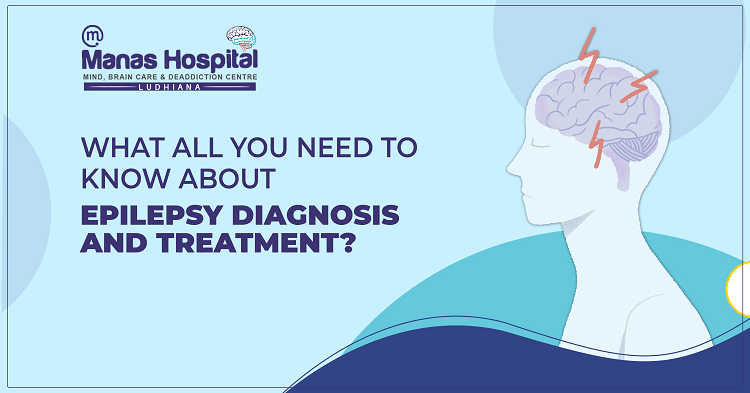
What all you need to know about epilepsy diagnosis and treatment?
Epilepsy Diagnosis
The Epilepsy evaluation will include the following:
- Undergoing a Neurological exam
The doctor may test your motor abilities, mental function, behavior, and other areas to diagnose the condition and determine the reason behind epilepsy which you might have.
- Blood tests
The doctor will take the blood sample to look for infections, signs, genetic conditions, or other conditions that can be in link to seizures.
If you are facing issues related to mental health problems then you should consult the best psychiatrist in Ludhiana.
Checking the Brain Abnormality
- Electroencephalogram (EEG)
ECG is the most common test to diagnose epilepsy. In this test, the electrodes are attached to the scalp that is the paste-like substance. The electrodes record the electrical activity in the brain.
Epilepsy can result in normal changes in the brain and affect the normal pattern. The doctor will check on the video when doing an EEG while you are asleep or awake. When the doctor records the seizures it helps to check what type you are having. The doctor can give you instructions on getting the things done which cause seizures like getting little sleep before the test.
- High-density EEG
The doctor might recommend a high-dentist EEG test and this test helps the doctor to determine which brain area is affected by the seizures.
- Computerized tomography (CT) scan
The CT scan uses the X-rays to get the cross-sectional images of the brain which might be causing seizures such as bleeding, cysts, and tumors.
- Magnetic resonance imaging (MRI)
With MRI there is the use of powerful magnets and radio waves to create a detailed view of the brain. The doctor can even detect the abnormalities or lesions in the brain which are leading to seizures.
- Functional MRI (fMRI)
The functional MRI changes the blood flow when the specific part of the brain is working. With this test, the doctor will identify the exact location of the critical function such as movement and speech.
- Positron emission tomography (PET)
With PET scans radioactive material is a small amount of low-dose is used to check the areas visually of the brain. This way it helps the doctor to identify the area which has the abnormality.
- Neuropsychological tests
This test helps the doctor to assess the memory, thinking, and speech skills. The test results help the doctor to determine which areas of the brain are affected.
With the test results, the doctor can use the different combinations to analyze the techniques which help to know from where the seizures started and these are mentioned below:
- Statistical parametric mapping (SPM)
This method helps to compare the brain areas which have increased metabolism during seizures so that the brain has normal functioning.
- Curry analysis
Curry analysis takes the use of ECG technique data and projects it on the MRI. This way the area can be checked from where the seizures are occurring.






